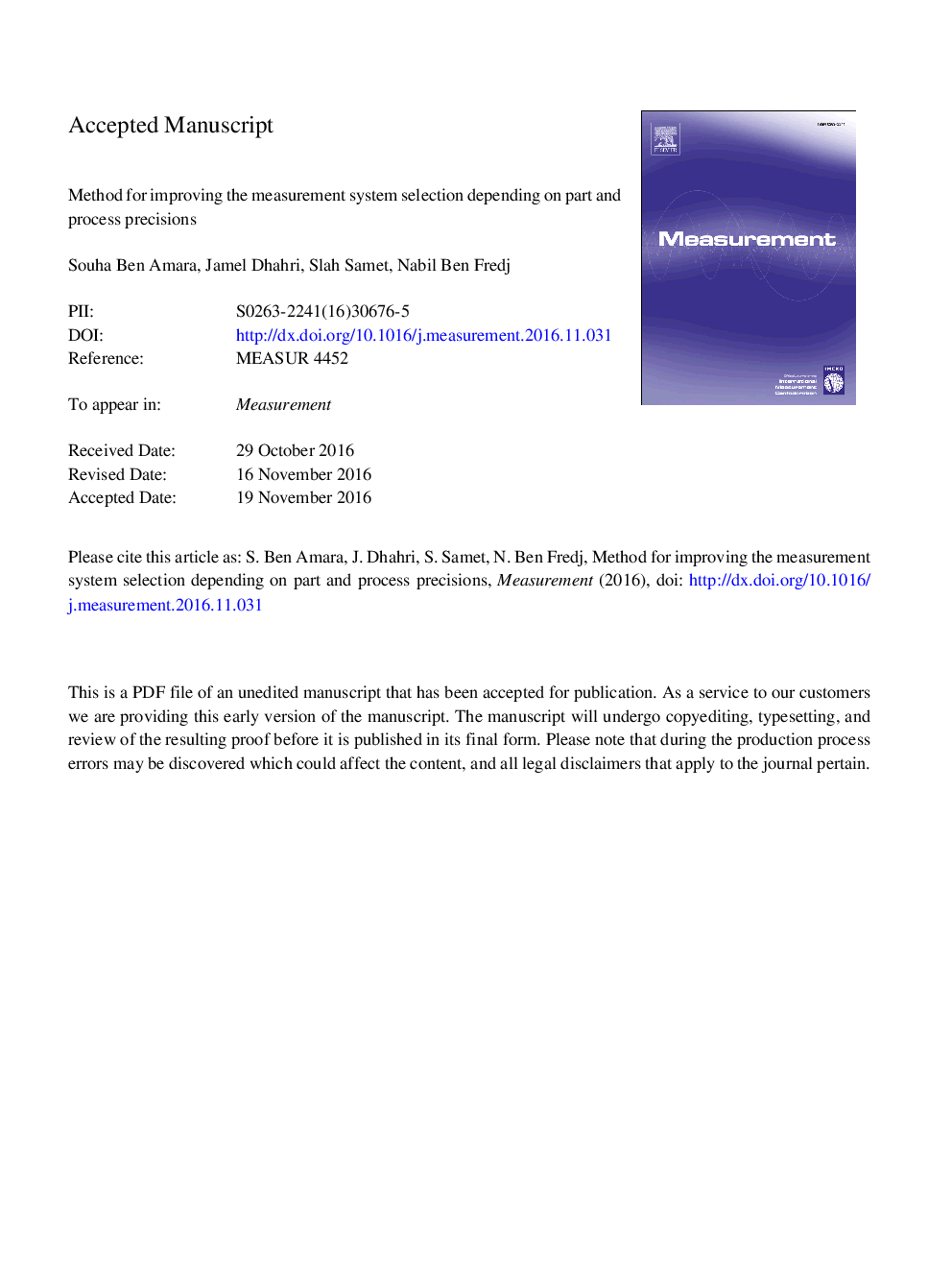| Article ID | Journal | Published Year | Pages | File Type |
|---|---|---|---|---|
| 5006851 | Measurement | 2017 | 38 Pages |
Abstract
This paper suggests a method for selecting the appropriate measurement system that at best fits to the precisions of part and process simultaneously. This method conducts a hypothesis test using the number of observations n, the probabilities of type I and type II errors, the required value of the capability index (Cp,Required) and the tolerance (Tol) of the evaluated specification to establish the corresponding critical values of the number of distinct categories (NDCâ) and the precision to tolerance ratio (PTRâ). Values of Cp,Required, NDCâ and PTRâ are then used to draw four quarters of plane. PTRâ is plotted on the (Tol, Ïm) quarter of plane, NDCâ is plotted on the (Ïm, Ïp) quarter of plane, Cp,Required is plotted on the (Tol, Ïp) quarter of plane and a 45° miter line is plotted on the (Ïm, Ïm) quarter of plane. The highest tolerable level of the measurement system variability (Ïm) is firstly assessed by means of PTRâ in the quarter of plane (Tol, Ïm). Thereafter, the adequacy of this variability to the process precision is checked out by means of projections in the quarter of plane (Ïm, Ïm) using the miter line, thereafter in the quarter of plane (Ïm, Ïp) using NDCâ and at last in the quarter of plane (Tol, Ïp) using Cp,Required. The application of the proposed method avoids both cases of over and lack of precisions of the selected measurement system regarding to the tolerance of the part and to the process variability.
Related Topics
Physical Sciences and Engineering
Engineering
Control and Systems Engineering
Authors
Souha Ben Amara, Jamel Dhahri, Slah Samet, Nabil Ben Fredj,
